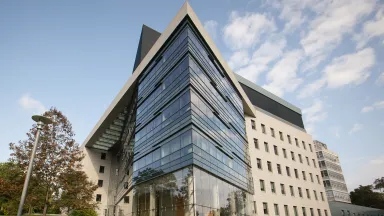Resources
Preparing for Your First Visit to the Montefiore Headache Center
Please download, print, review and complete the following information BEFORE your first visit to the Montefiore Headache Center:
- New Patient Questionnaire
This information will help us understand your headache pattern, pain characteristics and medical history. If you cannot complete the new patient questionnaire before your office visit, please arrive to your appointment 45 minutes early. - Headache Diary
Please download and complete the Headache Diary 30 days BEFORE your first appointment.
Bring the diary and questionnaire to your appointment along with a list of your current and past medications, related exams and other medical information that may help us understand and treat your headaches. All information will be reviewed during your first visit.
To ensure your privacy and confidentiality, we ask that you download and review the HIPAA Joint Privacy Notice Summary. For your benefit, you will be asked to sign a document stating that you are aware of our privavcy policies.
Need Help?
If you have difficulty downloading or printing documents, please contact our office and request that they be mailed or emailed to you.







